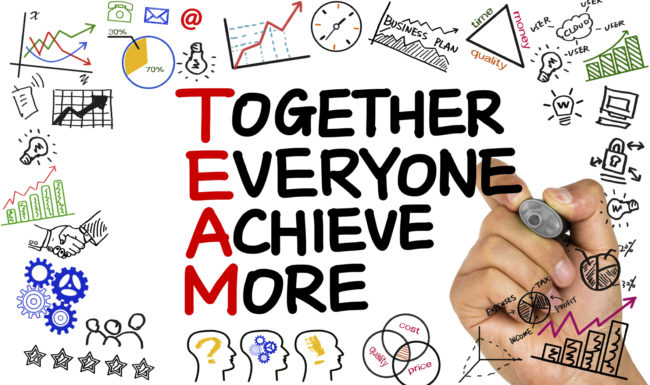Connecting Employees to Customer Experience
4 Ways to Help Customer-Facing Employees Embrace CX
By Lesley Boucher, Vice President of Customer Experience, ORI
If you’re a manager who has worked hard to build an effective team, you know the impact that each member can have on overall performance. Engaged employees are a boon to your organization: they have lower absentee rates, yield higher productivity, and are willing to sustain greater levels of discretionary effort. Their strong emotional commitment to the organization also contributes to a more cohesive, energetic workplace—all in all, good things. It’s interesting, however, how often the “engaged employees” conversation has an almost entirely inward focus without much attention placed on the external customer. Even engaged employees do not always see how their activities tie in to the larger organization’s customer experience (CX) initiatives.
Customer-facing employees are best positioned to capture what they hear customers say and then relate it to organizational priorities and objectives. They can pinpoint fits and gaps, what works and what doesn’t. As an additional channel through which to listen to the voice of the customer, they can be a valuable source of the data and insights necessary to improve your strategic focus. This raises an important question to consider: When did you last pull together groups of customer-facing teams and ask them to share insights on how they think the customer experience is going?
Thinking about this more broadly, even employees who don’t interact with customers directly can still have a significant impact on the way customers feel when they do business with you. Consider all of the various departments, policies, and programs that govern what you do. Do they help customers accomplish their goals? Do they take into account how much effort might be required? Do they acknowledge the value and importance of your customers? Creating a customer-centric culture is a bottom-line issue that involves everyone in the organization—not just those on the front lines.
Below I’ve outlined four ways that organizations can help employees embrace the role they play in shaping customer experience:
Lead by example
Leaders need to walk in the shoes of frontline employees—those who are closest to your customers’ reality. For example, Jeff Bezos is known to lend a hand packing boxes in Amazon’s fulfillment centers. And when John Chambers was CEO of Cisco, he reportedly spent 80% of his time with customers and asked executives to spend 50% of their days in dialogue with those who pay the bills: customers. Employees will “get” how important customer experience is when they not only hear the words but also see it demonstrated in the actions of their leaders.
Change the focus from getting things done quickly to getting them done right
This probably seems like common sense, but it’s easy to get so caught up in responding rapidly that you lose sight of exactly what the customer asked for in the first place. Do you care that you got your Zappos shoes in record time if the size is wrong? No, of course not. So, while it’s essential to be responsive, it’s even more important to listen carefully, set appropriate expectations, and deliver accurately. In a call center, this is known as first call resolution, and it’s something that can be tracked relatively easily. In a B2B environment, ensuring that you are understanding each client’s need and responding with an effective solution requires a very intentional effort on the part of mid-level managers and their teams. For senior management, this in turn means encouraging employees to solve the root cause issue as opposed to the symptom, and this can take time and resources.
Make it easy for employees to share the insights they gain
Establish a process that makes it easy for employees to share their customer insights and issues. Whatever system you choose—email, telephone, text, or even an app—it is vital that you consolidate these observations. Emphasize that when employees share feedback and concerns, the organization can use this input to continually refine the way you do business to increase positive experience and decrease customer effort. One key step that can be overlooked in this process: providing employees with the opportunity to stop and reflect on customer experience and how it might be improved. Leaders can establish the priority and the tools but, in the absence of time and a shared learning environment, employees will be hard pressed to focus on initiatives that strengthen customer engagement.
Share results with your employees—and thank them for their efforts
New behaviors are more rapidly adopted when individuals understand the impact they have on results. Conversely, it’s easy for employees to get discouraged if they don’t see anything being done with the insights they have shared. That is why it’s crucial for you to tell employees what they’ve helped you learn, explain the modifications you’ll implement, and thank them for the time they spent sharing the feedback. Similarly, encourage your teams to take direct action where they can and “do what it takes” to drive value for customers. Recognizing teams and individuals for translating all of these ideas into action will encourage the rest of your employees to strengthen relationships with their customers and ingrain the process in your culture.
It’s an interesting time in the world of customer experience, with organizations across the globe searching for ways to differentiate themselves as customer expectations grow exponentially and innovation becomes a daily—not weekly or monthly—requirement. One of the keys to success is fully involving your employees not only in the customer experience conversation but in the action plan to strengthen engagement. A senior leader at a large telecommunications company put it well during a conversation we had at the Customer Experience Professionals Association (CXPA) annual Insight Exchange: Let’s make our primary focus helping our teams solve the issues we know we have in order to show responsiveness, build our customer-centric culture internally, and drive results for our clients. Then, and only then, will we be in a good position to circle back with our customers and solicit additional feedback.












